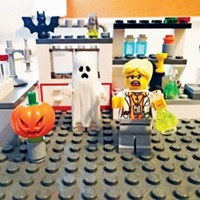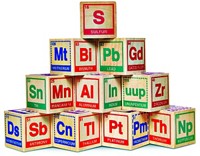Advertisement
Grab your lab coat. Let's get started
Welcome!
Welcome!
Create an account below to get 6 C&EN articles per month, receive newsletters and more - all free.
It seems this is your first time logging in online. Please enter the following information to continue.
As an ACS member you automatically get access to this site. All we need is few more details to create your reading experience.
Not you? Sign in with a different account.
Not you? Sign in with a different account.
ERROR 1
ERROR 1
ERROR 2
ERROR 2
ERROR 2
ERROR 2
ERROR 2
Password and Confirm password must match.
If you have an ACS member number, please enter it here so we can link this account to your membership. (optional)
ERROR 2
ACS values your privacy. By submitting your information, you are gaining access to C&EN and subscribing to our weekly newsletter. We use the information you provide to make your reading experience better, and we will never sell your data to third party members.
Education
Newscripts
DIY Chemistry Sets, Greening Greensburg, Dinosaurs And Chickens
by Rachel Petkewich
May 19, 2008
| A version of this story appeared in
Volume 86, Issue 20
DIY Chemistry Sets
"On Christmas morning 1964, Just as I'd decided that I hadn't gotten the one gift that I really wanted". My father said, "This is from your mother and me. It is not a toy," writes Robert B. Thompson in the preface of his new book, the first in a do-it-yourself series on science. There, unboxed on the kitchen table to display its glorious contents, was a CHEMISTRY SET.
Liability concerns and lawyers have virtually ended that former rite of passage for many would-be chemists. How does one respond to the demise of the chemistry set? Answer: Build your own. And Thompson describes how in his “Illustrated Guide to Home Chemistry Experiments: All Lab, No Lecture.”
“Getting that chemistry set was a life-changing experience,” according to the author, who still maintains a chemistry lab in his basement. “Some so-called ‘chemistry sets’ nowadays are actually promoted as using no heat, no glass, and no chemicals, as if that were something to be proud of. They might just as well promote them as ‘no chemistry.’ ”
Thompson promises that the 22 chapters of his book are not all about pretty colors and stinky smells but rather about scientific observation and chemical safety. “If you plan to break the law, this book is not for you,” Thompson adds, as it lacks information about making nitroglycerin or methamphetamines. Yet Thompson considers making napalm, which essentially is gasoline mixed with various thickening agents, to be suitably educational for high school and college students.
Greening Greensburg
The dream that brings a tin man, a scarecrow, a cowardly lion, a girl, and her little dog to the Emerald City is legendary—especially in the part of the Midwest referred to as Tornado Alley. Now, a dream to rebuild a perhaps presciently named Kansas town that was demolished by a tornado could become a reality that is green all over.
It's going to take more than clicking ruby slippers together to make the disaster zone look like home. On May 4, 2007, a powerful twister nearly wiped tiny GREENSBURG off the map. Half of the original residents have moved elsewhere, but hope glimmers now that the water tower is back up and the town's one stoplight is working again.
The residents who stayed want to rebuild their town in energy-efficient and environmentally sustainable ways. About 40 new homes there are rife with recycled materials from damaged homes, and energy-efficient fixtures and appliances, and some have solar panels, according to media reports. But new construction is expensive and frustrating for the more than 700 Greensburg residents now living in federally issued trailers.
In June, the new television channel Planet Green will air a 13-part documentary coproduced by actor and environmentalist Leonardo DiCaprio and producer Craig Piligian about the massive reconstruction. No word on whether a yellow brick road is part of the plan.

Dinosaurs And Chickens
In a finding that pecks away at the ferocious qualities long associated with TYRANNOSAURUS REX, scientists say that the dinosaur's present-day legacy struts comedically around by the millions. We're talking poultry here.
Building upon work they reported last year, museum researchers and professors from Harvard University and North Carolina State University reported that their mass spectrometric analysis of protein extracted from a 68 million-year-old T. rex bone suggests the biggest baddie of them all is more closely related to chickens and ostriches than to lizards and alligators (Science 2008, 320, 499).
Scientists have long speculated that dinosaurs had a family connection to chickens. That hunch was based on morphological similarities in their skeletons, not taste tests of chicken wings and dinosaur legs.
This week’s column was written by Rachel Petkewich. Please send comments and suggestions to newscripts@acs.org.
This week's column was written by Rachel Petkewich. Please send comments and suggestions to newscripts@acs.org.








Join the conversation
Contact the reporter
Submit a Letter to the Editor for publication
Engage with us on Twitter